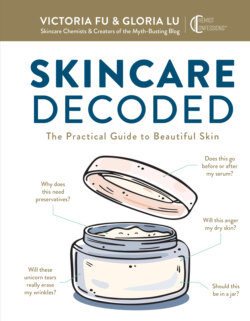Читать книгу Skincare Decoded - Victoria Fu - Страница 28
На сайте Литреса книга снята с продажи.
ОглавлениеSKINCARE DECODED • 32 CLEANSERS • 33
A Very Brief History
of Cleansers
Probably one of the oldest forms of skincare, soap has
been around for almost 6,000 years, since the time of
ancient Babylon. All sorts of ingredients have been used to
make soap, such as ash (lye), animal fat (or pancreases!),
plant oils, and more. The first mention of soap—originally used to clean textiles and
as a medicine—as a skin cleanser was during the Roman Empire. More commonly,
Romans would massage oil into their skin and scrape away the grime—who knew oil
cleansers had so much history? Liquid soap didn’t come around until the late 1800s,
when it was invented by Palmolive. There’s many more that we haven’t listed here.
When you’re traveling, try checking out the local soap shops to see different cultures’
takes on this skincare essential.
Soaps Around the World
Every ancient civilization had its favorite recipe for soap. You can actually find modern
versions of these old-school formulas still in use.
African Black Soap Originating from West Africa, black soap uses the ash from burnt
plant bits like bark and cocoa kernels, which is how it gets its signature color. Fans of
African black soap swear by its antimicrobial properties for acne-prone skin.
Beldi Soap Also known as Moroccan black soap, Beldi has a signature gooey
consistency and lack of water in the formula. It’s traditionally used with gloves for a
deep body exfoliation.
Aleppo Soap Hailing from the city of Aleppo, Syria, this soap is reputed to have
historical origins in ancient Egypt and Syria. Its key ingredient is laurel berry oil.
Marseilles Soap Named after the French city of Marseilles, this soap is made with a blend
of seawater and olive oil. A very effective cleanser, it’s even used for household cleaning—
which means it might be too harsh for dry, sensitive skin.
